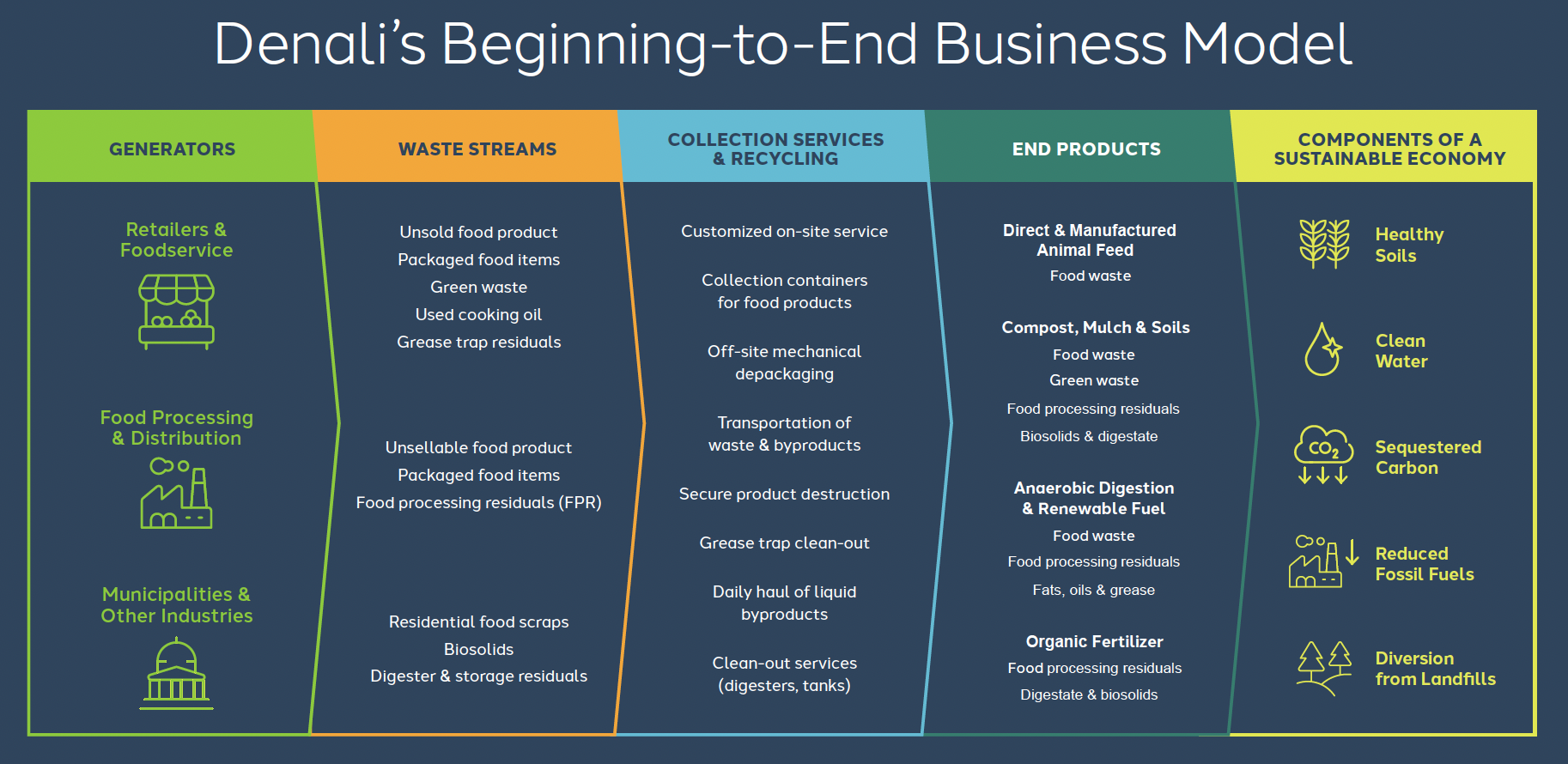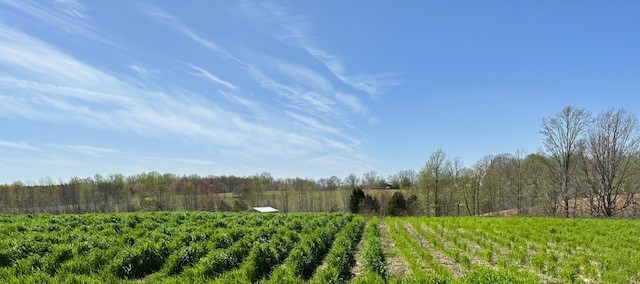Food waste is a growing pressure point for businesses and our environment. When organics end up in landfills, they generate greenhouse gas emissions that negatively impact our climate and prevent nutrients from contributing to healthy soil.
A circular economy provides economic and environmental benefits by capturing food that would have otherwise gone to landfills and giving it new life by repurposing it into a new product. At Denali, we have built a national system to make this possible. The outcome is not just landfill diversion, but the return of resources in forms that strengthen soils, generate clean water, and create renewable products.
To understand how circularity works in practice, it helps to trace the journey we manage from collection to conversion.
What a circular economy means for food waste
At its core, a circular economy treats food and organic byproducts as resources with untapped value. Organic byproducts and residuals include used cooking oil collected from restaurants and liquid protein and other nutrient-rich materials generated when meat, such as poultry, are processed. When food scraps and residuals are collected and cycled back into new products, they enrich gardens and landscapes, provide animal feed, and even generate renewable energy. The principle is simple: keep materials in motion so they continue delivering value instead of being lost to disposal.
Denali’s circular economy in action
Circularity only comes to life when you can see it operating at scale. Our nationwide system shows how millions of tons of unconsumable food can move through collection, recycling, and conversion to become part of a working loop

Step 1: The process begins at the point of generation. Grocery stores, restaurants, food processors, municipalities, and other partners serving, producing, or handling food they cannot use or donate. We ensure it is picked up and sent toward recovery rather than disposal.
Step 2: Following collection, the material goes through intermediate processing, like depackaging, and is then recycled at locations across the country, where we manage the full journey of food waste from start to finish. Depackaging mechanically separates food from its packaging so the organic portion can safely continue through the renewable cycle. Denali is a leader in employing solutions such as this to ensure organic materials can be recycled into their highest and best use.
Step 3: Materials are cycled through Denali or partner composting operations, anaerobic digesters, land application programs, or feed production sites which each play a role in converting different types of food and food byproducts into new resources, such as compost, mulch, fertilizers, animal feed, and renewable fuels.
Step 4: At this stage, Denali and our various partners convert the material into finished products including compost, mulch, soils, fertilizers, feed, and biofuels.
Step 5: The products are then distributed back into use. Farmers, landowners, retailers, and municipalities receive materials that restore soil health, support crops, the water supply, and provide renewable sources of energy.
Step 6: The loop closes when those resources begin delivering measurable benefits. Soils retain nutrients and water, clean water is returned to ecosystems, and greenhouse gas emissions are reduced. What was once considered waste now creates lasting value for agriculture, communities, and the environment.
Scale that makes a difference
In 2024, we recycled 7 million tons of organic byproducts that would otherwise have gone to waste. That material flowed through our substantial network across 48 states, supported by more than 2,500 collection assets and thousands of customer partnerships. Few organizations have the reach or the specialized infrastructure to manage food waste, biosolids, cooking oils, and green waste at this scale. The result is a system that can collect from a local grocery store or a national food processor and deliver the same outcome: valuable resources returned to reuse rather than lost to a landfill.

Innovation that supports circularity
Denali’s model continues to grow through investment in new technology and products. Mechanical depackaging is now available at more than 45 locations across the U.S., making it easier to cleanly separate food from its packaging — once a challenging manual process for store employees.
In 2025, we launched a mobile depackaging unit, giving customers an emergency response option when supply chains are disrupted. The company also introduced ReCirculate™, a compost made from unsold food collected from grocers. First piloted in southern states, ReCirculate is now available in 600 Walmart stores nationwide, giving retailers and consumers a direct way to participate in the circular economy.
The real benefits of a circular economy for food waste
The value of circularity shows up in the fields where crops are grown, in the water that flows back into rivers and streams, in the air communities breathe, and in the resilience of local economies. Our system delivers these benefits in measurable ways.
Healthy soils are one of the clearest examples. More than 100,000 acres of farmland were improved in 2024 through the use of our compost and fertilizer. These products restore nutrients, help soil retain water, and reduce erosion, giving farmers stronger crop yields while building long-term soil health.

Water is another area of impact. Much of the organic material we manage is made up of water, and through recycling processes nearly 1.2 billion gallons of clean water were returned to the environment in 2024. This return supports ecosystems, helps protect watersheds, and reinforces water as a shared resource.
Landfill diversion also plays a major role in reducing emissions. By recycling food waste and other organics, we helped avoid an estimated 750,000 metric tons of carbon dioxide equivalent in 2024. That’s like driving 1.9 billion miles in an average gas car, or circling Earth 76,000 times. Check out our 2024 Sustainability Report which is a wealth of information about our positive impact on the environment last year.
The impact comes through in local communities as well. Our operations support jobs and partnerships across the country, while its products contribute to land restoration projects and healthier urban and rural environments. Whether it is a farmer applying natural fertilizer, a city investing in stormwater management, or a household using compost in the garden, the loop delivers value back where it matters most.
Partnering for a true circular economy
Circularity delivers value on all fronts. For businesses, it means reliable food waste solutions and measurable progress toward sustainability goals. For communities, it means healthier soils, cleaner water, and local jobs. For the planet, it means fewer emissions and resources that last longer. This is the triple-win that makes circular systems essential for the future.






